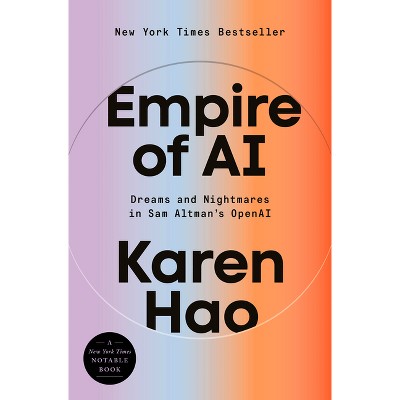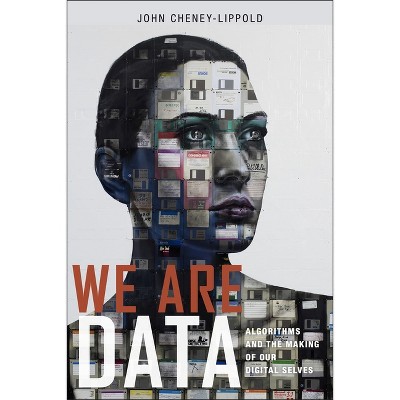Sponsored

Whose Global Village? - by Ramesh Srinivasan (Paperback)
$31.00
In Stock
Eligible for registries and wish lists
Sponsored
About this item
Highlights
- A call to action to include marginalized, non-western communities in the continuously expanding digital revolution In the digital age, technology has shrunk the physical world into a "global village," where we all seem to be connected as an online community as information travels to the farthest reaches of the planet with the click of a mouse.
- Author(s): Ramesh Srinivasan
- 272 Pages
- Technology, Social Aspects
Description
Book Synopsis
A call to action to include marginalized, non-western communities in the continuously expanding digital revolution
In the digital age, technology has shrunk the physical world into a "global village," where we all seem to be connected as an online community as information travels to the farthest reaches of the planet with the click of a mouse. Yet while we think of platforms such as Twitter and Facebook as open and accessible to all, in reality, these are commercial entities developed primarily by and for the Western world. Considering how new technologies increasingly shape labor, economics, and politics, these tools often reinforce the inequalities of globalization, rarely reflecting the perspectives of those at the bottom of the digital divide. This book asks us to re-consider 'whose global village' we are shaping with the digital technology revolution today. Sharing stories of collaboration with Native Americans in California and New Mexico, revolutionaries in Egypt, communities in rural India, and others across the world, Ramesh Srinivasan urges us to re-imagine what the Internet, mobile phones, or social media platforms may look like when considered from the perspective of diverse cultures. Such collaborations can pave the way for a people-first approach toward designing and working with new technology worldwide. Whose Global Village seeks to inspire professionals, activists, and scholars alike to think about technology in a way that embraces the realities of communities too often relegated to the margins. We can then start to visualize a world where technologies serve diverse communities rather than just the Western consumer.Review Quotes
"In the age of video streaming and the internet, indigenous peoples can fight for their rights as we see with the Dakota Pipeline and across the world today. Whose Global Village? points the way forward to a digital world that recognizes the dignity and voices of indigenous peoples."--Winona La Duke, Executive Director of Honor the Earth
"In this bold book, Srinivasan tackles the myth of digital universality head on, insisting that technologies should be designed by and serve diverse communities rather than corporate elites. Based on years of fieldwork, Whose Global Village?reads like a manifesto and is bound to stir up debate. A must read for media scholars, technology designers, and community organizations alike."--Lisa Parks, Professor of Comparative Media Studies, MIT
"The 2016 election showed us what happens when technologies like Facebook, that are supposed to connect us, actually leave us in bubbles and oblivious to the world that doesnt agree with us. Whose Global Village? shows that another technology is possible, and in fact exists, through examples across the world that are all about furthering cultural voices and conversations."-- "The Yes Men"
"Upstart successes like The Young Turks are becoming less common, partially as a result of the increasing corporatization and monopolization of social media. Whose Global Village? offers an alternate path, out of the self-selected echo chambers that marginalize non-western and indigenous voices, and into a future where new technology operates in greater harmony with grassroots concerns and culturally diverse populations across the world."--Cenk Uygur, Founder of The Young Turks
"Whose Global Village? invites us to question some of the sacred narratives that have grown up around digital and networked technologies in the westfirst among them, the idea that digital technologies follow some universal path of development. This book is a powerful corrective to various forms of cyberutopianism, even as it reimagines core conceptsfrom agency and voice to participation and appropriation."--Henry Jenkins, co-author of By Any Media Necessary: The New Youth Activism
"Whose Global Village?stimulated my thinking, and has reinforced my belief that the three seemingly disparate topics I keep returning to in my life social and cultural innovation, new technologies and community-driven design are in fact closely related, and should be so to make sure the digital era benefits all people equally."-- "TheMuseumoftheFuture.com"
Dimensions (Overall): 8.9 Inches (H) x 6.0 Inches (W) x .9 Inches (D)
Weight: 1.0 Pounds
Suggested Age: 22 Years and Up
Number of Pages: 272
Genre: Technology
Sub-Genre: Social Aspects
Publisher: New York University Press
Format: Paperback
Author: Ramesh Srinivasan
Language: English
Street Date: December 4, 2018
TCIN: 1005681678
UPC: 9781479856084
Item Number (DPCI): 247-35-9781
Origin: Made in the USA or Imported
If the item details aren’t accurate or complete, we want to know about it.
Shipping details
Estimated ship dimensions: 0.9 inches length x 6 inches width x 8.9 inches height
Estimated ship weight: 1 pounds
We regret that this item cannot be shipped to PO Boxes.
This item cannot be shipped to the following locations: American Samoa (see also separate entry under AS), Guam (see also separate entry under GU), Northern Mariana Islands, Puerto Rico (see also separate entry under PR), United States Minor Outlying Islands, Virgin Islands, U.S., APO/FPO
Return details
This item can be returned to any Target store or Target.com.
This item must be returned within 90 days of the date it was purchased in store, shipped, delivered by a Shipt shopper, or made ready for pickup.
See the return policy for complete information.
Frequently bought together

$8.49
MSRP $14.99
Buy 1, get 1 50% off select books
2 out of 5 stars with 1 ratings
Trending Computers & Technology Books

$10.99
Buy 1, get 1 50% off select books
4.3 out of 5 stars with 3 ratings

$7.99
Buy 1, get 1 50% off select books
5 out of 5 stars with 1 ratings














